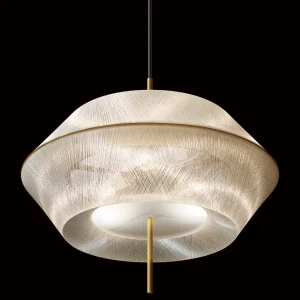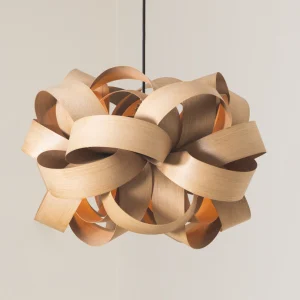Words By Emily Martin
TINA NORDEN is an interior designer and architect who boasts an impressively diverse portfolio of projects, which stretch across many contexts and continents, from hotel and restaurant design to high-end residential and boutique retail projects. As partner and principal at Conran and Partners, Norden leads the practice’s design teams in both the UK and Hong Kong and was instrumental in building the team in Asia. She joined the practice in 1997 and says her CV is ‘very short’, since Conran and Partners is the only practice she has worked at since graduating. She believes in style over fashion to ensure the result is timeless and remains fresh. She has a focus on hospitality, with her extensive experience aligning with deep-rooted practice principles. Last November, Conran and Partners was announced as the Interior Design Practice 2023 winner at the FX Awards. I speak to Norden about her work, life at the practice, love for interior design, and winning what she describes as a milestone accolade.
 Norden leads design teams in both the UK and Hong Kong.
Norden leads design teams in both the UK and Hong Kong.
‘I think that was probably one of the most exciting awards for us really,’ says Norden, reflecting on the practice’s FX Award. ‘I mean, we’ve won many awards for projects and that’s amazing. But I think something that actually is about us as a practice, our ethos, our people and the work that we’ve done over a period of time is mind-blowing. That’s really an amazing accolade to get from our end, our industry and you know, particularly given the fact that our management takeover was just at the end of the year before.’
Since 2016 Norden has been a member of the Conran and Partners board. She talks about her enjoyment of working with team members, and describes it as a truly multidisciplinary practice. While qualifying as a ‘fully fledged architect’, Norden says she found love in interior design: ‘It felt that interior design is faster moving, faster paced, which suits me and I enjoy that a lot. And you also you get an opportunity to get deep into projects much earlier; I was running little projects on site when I was quite junior and quite inexperienced, but because the projects are smaller – you know there’s less money at stake – there’s more opportunity to kind of get into all of the different stages. Much quicker than maybe architecture.’
It’s easy to see the passion and delight interior design brings her, which she says is more people-centric. Nevertheless, working as a designer at Conran and Partners has ensured Norden utilises all her acquired skills, a quality that has kept her at the practice for over a quarter of a century.
 Hotel Maximilian, a boutique hotel in Prague. Image credit: Matthias Aschauer
Hotel Maximilian, a boutique hotel in Prague. Image credit: Matthias Aschauer
‘It’s all kind of under one holistic umbrella,’ she adds. ‘So, I really enjoy that aspect. [When I first joined the practice] I was really at a very junior level, but I was thrown in straight at the deep end by working on a big architecture project in Japan, yet also worked on a very fun bar and restaurant for a very young client in Iceland. So completely different to one another. But I think that’s what Conran was all about. And that kind of gave me the bug for interiors.’
The approach of Sir Terence Conran – Conran and Partner’s late founder – to design was using all of his acquired skills and interests: he studied textiles as a student, he set up restaurants, he co-founded wood furniture maker Benchmark, set up the Design Museum, and designed shops, among his many achievements. He was arguably never qualified, but he was driven by passion and that, in turn, brought a new perspective to a project. When setting up one of the UK’s most prominent architecture practices he did so with a belief that ‘design improves the quality of people’s lives’.
‘[This is] absolutely still the case and, you know, that’s why we’re here doing it,’ says Norden. ‘With Terence, because he’s wasn’t an architect, or an interior designer, his view on things was very particular. It’s very peoplecentric, which I think is something that’s really stuck with us [as a practice]. And he was never someone who imposed a certain stylistic direction on the practice.’
 Villa Lucca is a private residence located in Hong Kong. Image credit: Harold De Puymorin
Villa Lucca is a private residence located in Hong Kong. Image credit: Harold De Puymorin
Today, the practice highlights its approach of designing for people, with Norden pointing out a ‘sensibility’ that links its work together rather than a style, an ethos derived from its founder. ‘But it’s also,’ she adds, ‘I think, an understanding of the commercial aspects of what we do because particularly in hospitality, of course, the space that we’re designing is there to sell and to also create money for the people that are investing in it. ‘And I think we’re keenly aware of that, particularly in the hospitality industry – it must be able to be monetised. So I think we’re also quite practical with that kind of thing and that, you know, you can design spaces that are beautiful, but that it also works really well.’





